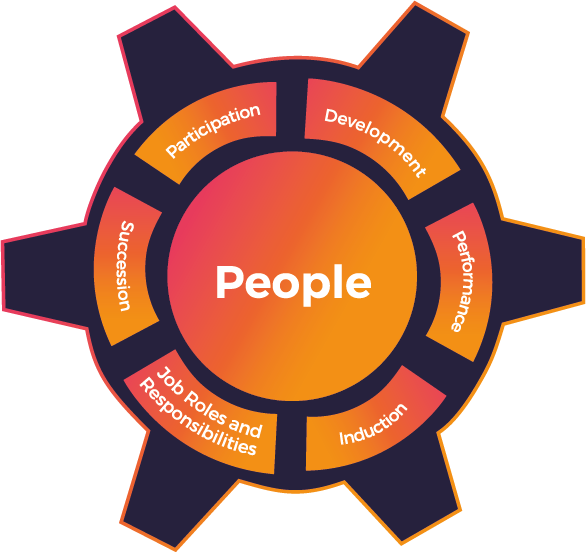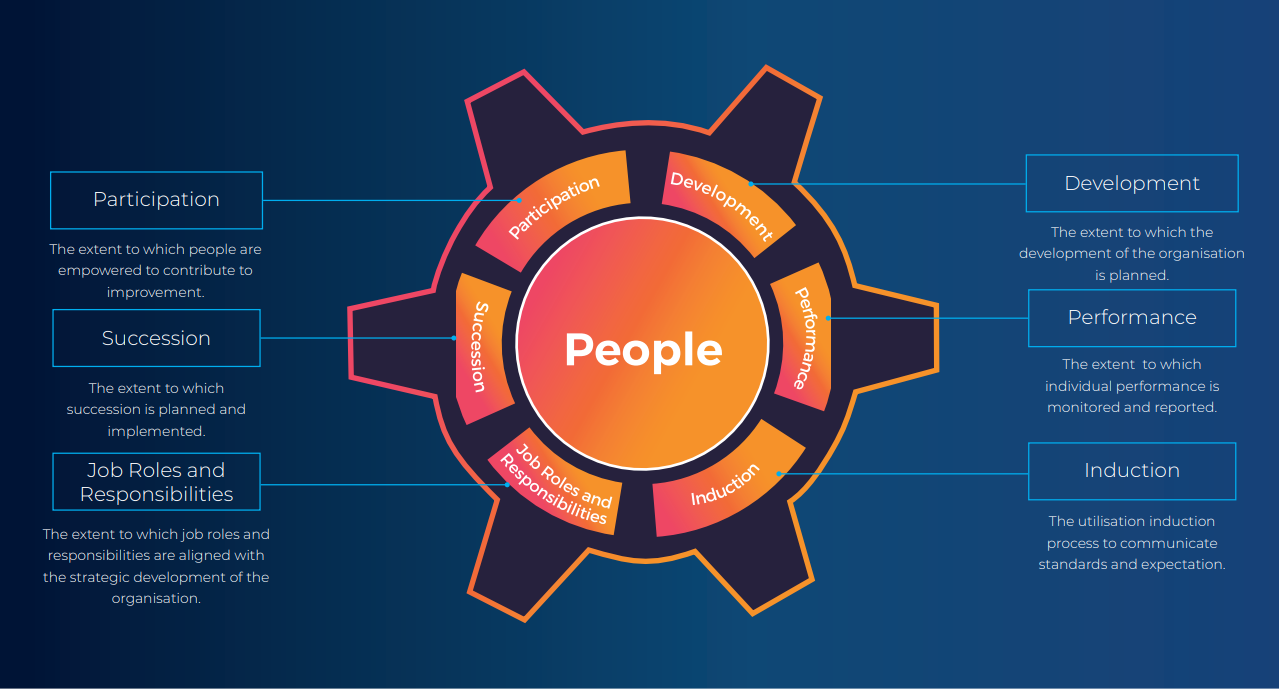2. Development
How the organisation is developed to achieve business aspirations.
As the challenges and aspirations for your business change, the skills, knowledge and experience required to
deliver them also change. Identifying the requirements and producing a plan to ensure the availability of the
appropriate resources through recruitment and/or developing individuals in-house is essential for business
sustainability. Improving employee development may involve professional training, coaching and mentoring,
cross-departmental training, soft-skills and personal development.



